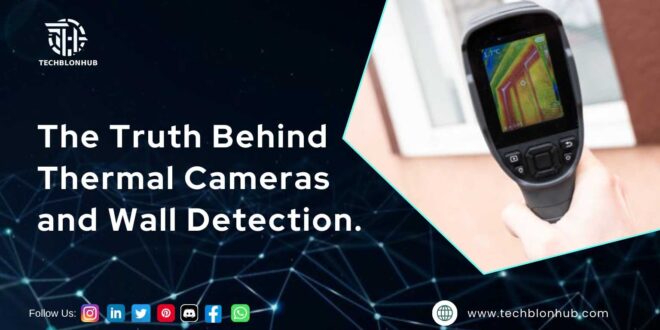When the topic is thermal cameras or thermal imaging, there is a lot of misinformation about their working and detection. What they can see and cannot see has been more like a mystery for most people. If you are planning to get this camera in your building, you might want to be clear about all these things so that you know what’s going to be captured in thermal cameras and how effective they are at detecting something. So, to help you out, we have done all the research for you and shared this guide with you.
To better understand answers to questions on thermal cameras, it is a good idea first to know how they work.
How does a thermal camera work?
It is also known as a thermal imaging camera and an infrared (IR) camera and uses infrared radiation as visible light. This camera utilizes heat, which enables you to see any object during dark conditions. They detect heat as it bounces off an object. Any thermal energy behind a wall is thus bounced back from that side and not through the wall. However, it can see the heat on a wall where the source of high enough heat is present on the other side.
Can a Thermal Camera Work Through Walls?
No, it cannot see through walls or any solid objects like you might see in movies. Walls are usually thick and insulated, blocking heat from the other side. Therefore, if you point a thermal camera at a wall, it will only detect heat from the wall itself, not from what lies behind it. However, if something inside the wall or on the other side generates enough heat to create a temperature difference, the thermal camera can detect it on the wall’s surface.
Building maintenance professionals also use thermal imagers to detect issues such as water leakage or missing insulation without the need to tear down walls.
Can Thermal Cameras See Through Smoke?
Yes, it can detect heat through smoke, which makes them valuable tools for firefighters. They help quickly locate people trapped in burning buildings. While soot particles block visible light, they allow infrared radiation to pass through. As a result, firefighters and first responders can navigate through smoke-filled rooms more effectively.
Can Thermal Cameras See Through Fog and Rain?
Yes, it can see through fog and rain. Although these weather conditions may limit the camera’s range due to infrared radiation scattering off water droplets, it penetrates fog more successfully than visible-light cameras. That’s why top car manufacturers equip their premium autonomous models with thermal imagers as part of their sensor suites.
Can Thermal Cameras See Through Metal?
Metal poses a challenge for thermal imaging cameras. Specifically, shiny or smooth surfaces act like infrared mirrors, reflecting infrared radiation. This reflection can hinder the monitoring of overheated pipes or machinery. In contrast, oxidized metal or surfaces with a matte finish are easier to measure accurately. Overall, thermal cameras cannot see through metal objects; however, conductive metals can reveal hot spots, cold spots, or substance levels inside metal containers.
Can Thermal Cameras See Through Concrete?
Like walls, thermal imaging cameras cannot see through concrete. However, they can detect objects inside the concrete, such as pipes or radiant heating, which create temperature differences on the surface. Thus, it is effective for checking for cracks or leaks in pipes installed within concrete.
Can Thermal Cameras See Through Glass?
No, it cannot see through glass. While regular cameras using visible light can see through glass, thermal imaging cameras do not offer the same view. This is because glass reflects infrared radiation. As a result, if you point a thermal imaging camera at a glass window, you will see a reflection instead of what lies beyond.
Can thermal cameras see through trees?
It cannot detect objects through a tree trunk. Nonetheless, it can spot people or animals in forested areas. That’s why search and rescue teams use thermal imaging cameras to identify heat signatures when searching large wilderness areas.
Can Thermal Cameras See Through Plastic?
A thermal imaging camera can see through thin, opaque plastic, such as a garbage bag. This happens because infrared radiation can pass through plastic, allowing the camera to detect whatever lies behind it. However, this only works with very thin plastic; thicker materials will block infrared radiation.
Can Thermal Cameras See in the Dark?
Yes, thermal imaging works well in darkness. Since it does not rely on visible light to visualize heat, a thermal camera performs better in dark conditions.

